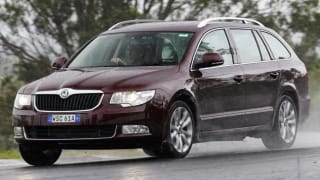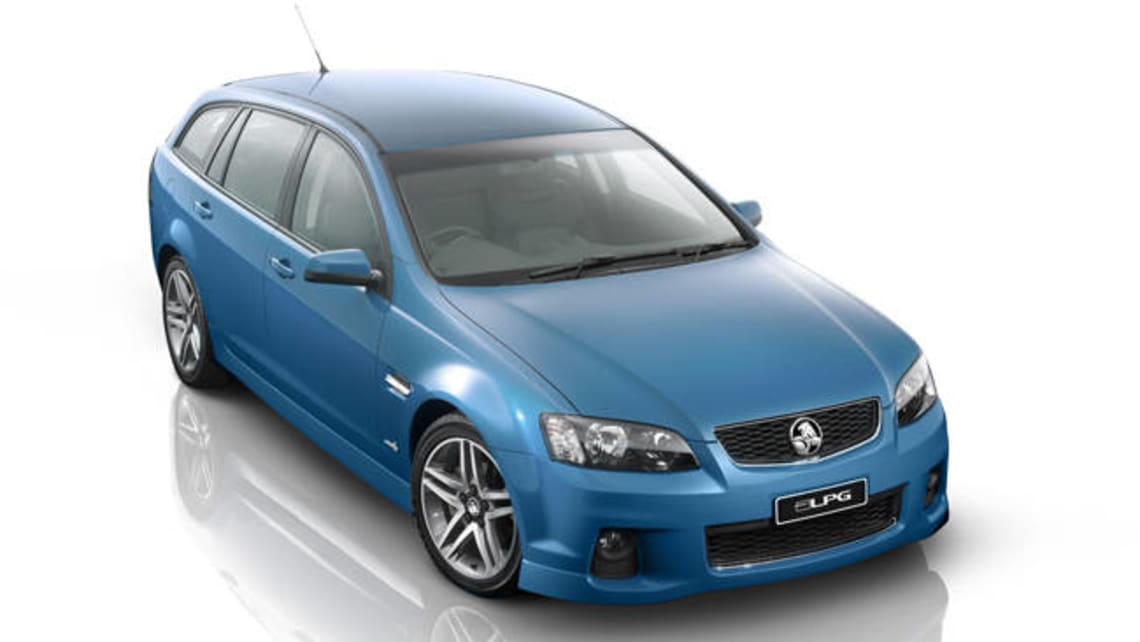
Skoda Superb wagon 2010 review
ANY car that lobs with a Superb badge on the boot had better be good. Using a name like that is an...
Browse over 9,000 car reviews

Just when local carmakers are turning out LPG engines that rival their petrol counterparts in performance and are more frugal than their predecessors, up goes the price of gas.
LPG prices have rocketed this year due in part to the big winter freeze in the northern hemisphere and an extra 2.5c-a-litre government excise added late last year. Prices have jumped by 20-25c/litre; more in country areas. The spike has put a dent in the case for LPG, though it still remains an attractive proposition.
The Holden Commodore LPG is priced from $42,490. Based on the official combined fuel consumption of 11.8l/100km, at 60c a litre, the cost of LPG to travel 20,000km a year is about $1400. At 85c/litre it is about $2000. Compare this with the $2750 it would cost in the equivalent petrol version, based on a petrol price of $1.45c/litre.

Holden charges $2500 more for an LPG than for a petrol version, but private buyers are eligible for a $2000 rebate from the Government. Then there is resale value, which is usually higher in an LPG car. So even at 85c/litre, buying a new LPG car is still cost-effective.
Holden's new dedicated gas engine is a big improvement over the previous dual-fuel option, producing more power and using less fuel. It also has a larger 84-litre tank, so the cruising range is stretched to more than 700km. The gas engine is available with only the 3.6-litre V6 Commodore engine, not the 3.0-litre, and comes with a 6-speed auto transmission.
Output is 180kW and 320Nm, or 5kW and 3Nm more than than the previous dual-fuel engine. That is 30kW and 30Nm less than the petrol-only 3.6-litre and 10kW less but 30Nm more than the 3.0-litre petrol V6. In the LPG engine's favour, peak torque kicks in at 2000rpm, a useful 800rpm lower than the petrol engine, and peak power comes on at 6000rpm or 700rpm lower. Combined fuel use for the LPG Commodore varies from 11.8l/100km in the Omega sedan (down from 13.4l/100km in the previous dual-fuel engine) to 12.3l/100km in the Berlina wagon.
Holden's new LPG system is a refined version of sequential vapour port injection system in which the liquid gas is vapourised before entering the engine, rather than Ford's more advanced liquid injection system, which sprays liquid gas directly into the engine. The economy gains come from improvements to the engine and the six-speed transmission replacing the previous four-speed. The engine also has lower exhaust emissions of 189 grams of CO2 a kilometre, easily passing the latest standards and scoring 4.5 out five in the Green Vehicle Guide.
The other big change is to the fuel tank -- two parallel cylinders under the floor behind the rear axle instead of a single tank between the rear wheel arches. This allows full use of the load area in the wagon and the slightly shallower boot of the sedan, as long as you are happy with a tyre inflation kit instead of a spare tyre.
If you are not and insist on the optional space-saver spare wheel or the full-size spare, then they sit on top of the boot floor and pinch load space. But it depends on which model you order -- sedan, wagon, ute or Caprice. Getting your head around all the combinations is taxing.
The sedans come with an inflator kit as standard or the choice of a space-saver wheel (no cost) or a full-size alloy wheel. Wagons have an inflator kit as standard or a steel wheel with an inflatable tyre. Utes come with an inflator kit as standard or a full-size spare wheel -- steel on the Omega (no cost) and alloy on the SV6 -- bolted to the floor of the tray. The Caprice gets a full-size alloy as standard or an optional inflation kit or space-saver spare wheel.
Turn the key and the starter motor gives a couple of extra cranks before the engine fires. Step-off response is not quite as urgent as the petrol and it sounds a little coarser under load, but it is still a quick and lively performer.
The advantage of the dedicated gas system over the previous dual-fuel Holden Commdore is that the new LPG engine can be tuned for optimum performance and economy – a task that is more difficult with a dual-fuel engine. The bottom line that most buyers will be looking for is a performance that is very similar to the petrol versions and most drivers will be hard-pressed to tell the difference under the right foot.
| Vehicle | Specs | Price* | |
|---|---|---|---|
| Omega (LPG) | 3.6L, LPG, 6 SP AUTO | $10,230 – 13,970 | 2012 Holden Commodore 2012 Omega (LPG) Pricing and Specs |
| Omega (LPG) | 3.6L, LPG, 6 SP AUTO | $7,590 – 10,670 | 2012 Holden Commodore 2012 Omega (LPG) Pricing and Specs |
| Omega | 3.0L, ULP, 6 SP AUTO | $12,100 – 16,060 | 2012 Holden Commodore 2012 Omega Pricing and Specs |
| Omega | 3.0L, ULP, 6 SP AUTO | $7,150 – 10,010 | 2012 Holden Commodore 2012 Omega Pricing and Specs |
$1,495
Lowest price, based on 352 car listings in the last 6 months